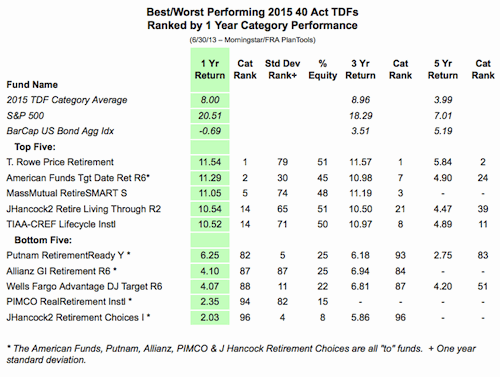
The Best & Worst TDF Performers
From an absolute performance standpoint, T. Rowe, TIAA-CREF, Principal, Great West and John Hancock led the 2012 charge. T. Rowe Price, TIAA-CREF and Principal were also among the top performing TDFs over the trailing three-year period calendar period.


